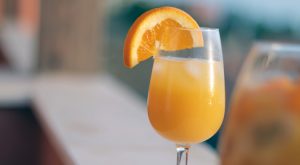 I run and I exercise and at times I injure myself. Two years ago I was training for my first half marathon and I found myself with stress fractures less than a month before the race. There aren’t enough good words to describe my disappointment.
I run and I exercise and at times I injure myself. Two years ago I was training for my first half marathon and I found myself with stress fractures less than a month before the race. There aren’t enough good words to describe my disappointment.
I started using Hyaluronic Acid (HA) in a face serum, but when I was researching it, I read about people who put 1/16 of a teaspoon in their morning smoothie, juice drink, or protein shake and how it had helped them heal from injury. It made their knees feel better. Folks who couldn’t play tennis anymore were singing the praises of HA because they could play a tennis match again with friends.
So I did some research.
Hyaluronic Acid is a substance that is naturally found in our human bodies. It is found in especially high concentrations in the fluid in our eyes and our joints. Essentially is it acts as a cushion and lubricant to our joints and tissues. Because it binds to water (and our bodies are 70% water) it makes our joints and tissues more moist and movable. When HA binds to the liquid already present in our bodies and makes a jello-y, tissue-friendly substance that helps our joints move better, without as much pain and it also aids in healing. Think of it like oil in your car. You make sure you change your oil so all the metal in your car is well-lubricated. HA does the same thing for our bodies. And it acts in a similar way on our skin. When you mix HA with distilled water it makes a sort of jello-y substance. When you put this on your face, it binds to water in your skin, making your skin more soft and supple.
The skin is the largest organ in the body comprising about 15% of the body weight. Roughly 50% of the Hyaluronic Acid in our body is found in the skin. As we grow older, the body loses its ability to maintain this same concentration in the skin. With decreasing levels of HA in the skin, so goes the ability of the skin to hold water. The result, the skin becomes drier and loses its ability to maintain it’s hydration. Hyaluronic acid acts as a moisture filler by binding to water and helping to keep our skin wrinkle-free. It also fades the looks of wrinkles we may already have.
Unfortunately, HA also has a half-life. A half-life is the time it takes for the molecule to break down. Every single human being has about 15 grams of HA in their bodies at any given time. But because of the half-life, every single day one-third of our hyaluronic acid degrades and breaks down. This means that it takes less than three days for those 15 grams to be gone and scientists think that HA breaks down even faster on our skin. But here was the kicker for me. By the time we reach our mid-40’s, our bodies are making half the hyaluronic acid we need to keep our joints soft and movable, our eyes fluidy and our skin soft and full. This is the reason I decided to supplement by bodies naturally occurring HA.
Remember when you were a teen and those growing pains? If you have children you’ve probably been through it with them, too. My oldest grew six inches in six months. His body was using every little tiny, jello-y molecule of HA to keep his joints moist while he was growing. We’ve all been there. But I think that nature or our brains or something tells our body that we don’t need as much as we get older, after all, we’re no longer growing. But we do need HA. If we want to stay active, exercise, travel, and live longer with less injury, hyaluronic acid just might help.
I am not a doctor or a medical professional, so I cannot be certain all I know is I personally feel better.
Hyaluronic Acid for Joint Pain
Materials
- 1/16 of a teaspoon of Hyaluronic Acid powder
- 8 ounces of juice cranberry, orange, lemonade
Instructions
- I use my little measuring spoons and I spoon out the Hyaluronic Acid in my juice.
Notes
HA in liquid makes a jello-y substance, so it is best to let the powder soak in to the liquid so you drink the jello-y HA mixed with your juice instead of the liquid covered in powder that hasn’t dissolved yet. I hope that makes sense. I take vitamins and herbs every morning and evening and I take those with the HA juice drink.
- I had a sore left shoulder that does not hurt as much
- My right elbow was “pinchy” from using a computer mouse a lot and my elbow rested funny on my arm chair. Now I’ve fixed that, but my elbow kept hurting, until I started the HA
- Finally, I suffered stress fractures while training for a half-marathon. One year after the stress fractures, I still had a sore right ankle after I ran. It was so sore that even going down steps the day after hurt. I no longer have ankle pain. I’m back to training for another half-marathon and I have never felt better.
This is the hyaluronic acid powder I bought on Amazon.
I bought these small measuring spoons, because 1/16 of a tsp is really small.
And by the way –
- Tad — 1/4th teaspoon
- Dash — 1/8th teaspoon
- Pinch — 1/16th teaspoon
- Smidgen — 1/32nd teaspoon
- Drop — 1/64th teaspoon
Because it doesn’t say that on the measuring spoons. I wrote it on the back of them with a sharpie. The sharpie writing did eventually wear away, but I have the sizing memorized now.
[wc_toggle title=”More Information about Hyaluronic Acid” layout=”box” collapse=”1″]- Everything Ever Wanted to Know About Hyaluronic Acid
- Hyaluronic Acid on WebMD
- The Story of Hyaluronic Acid






